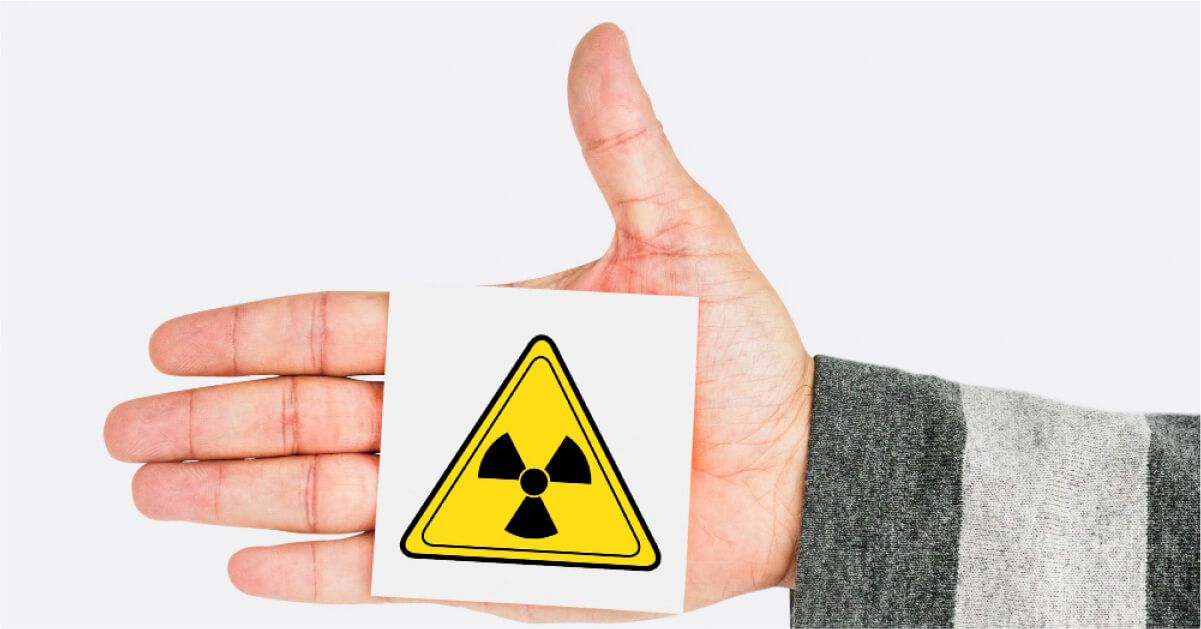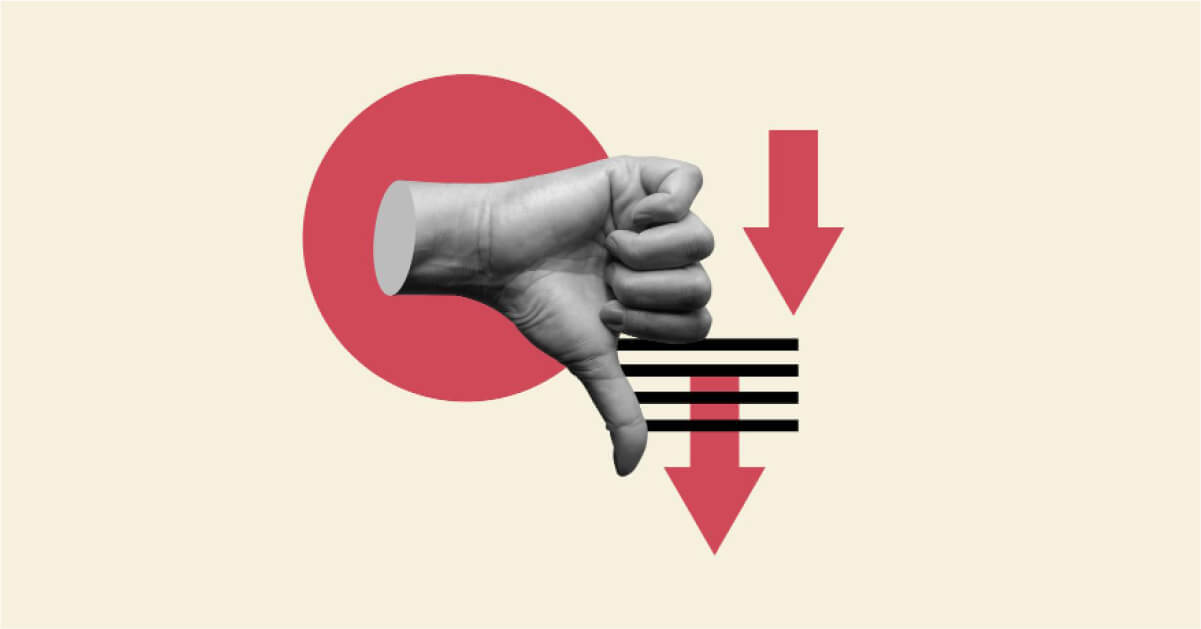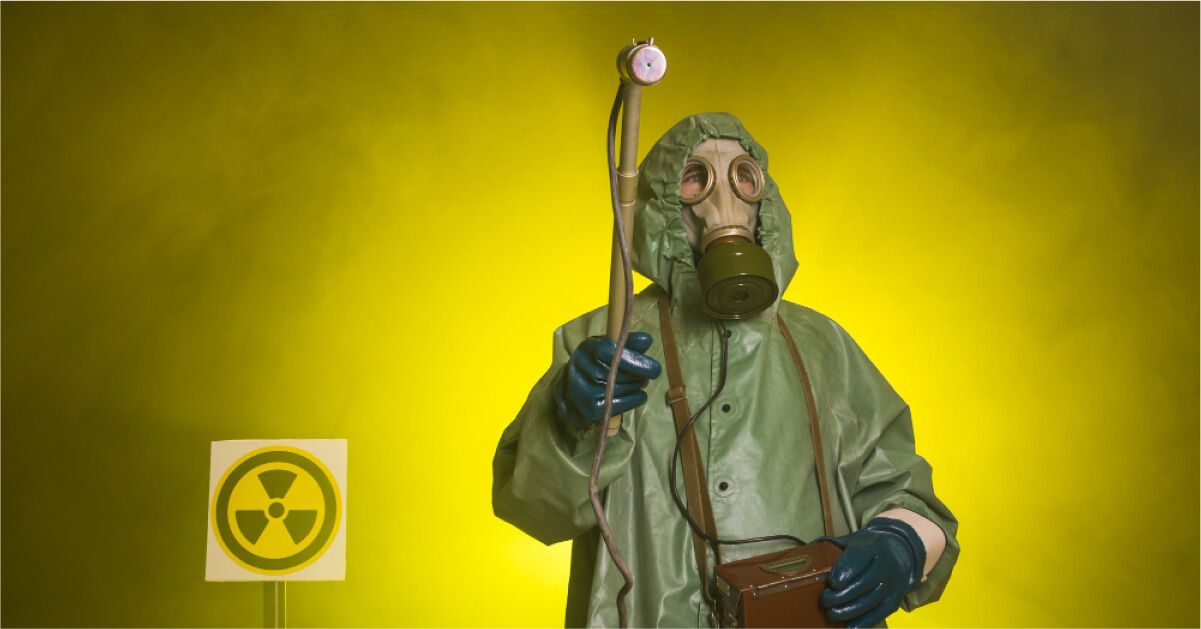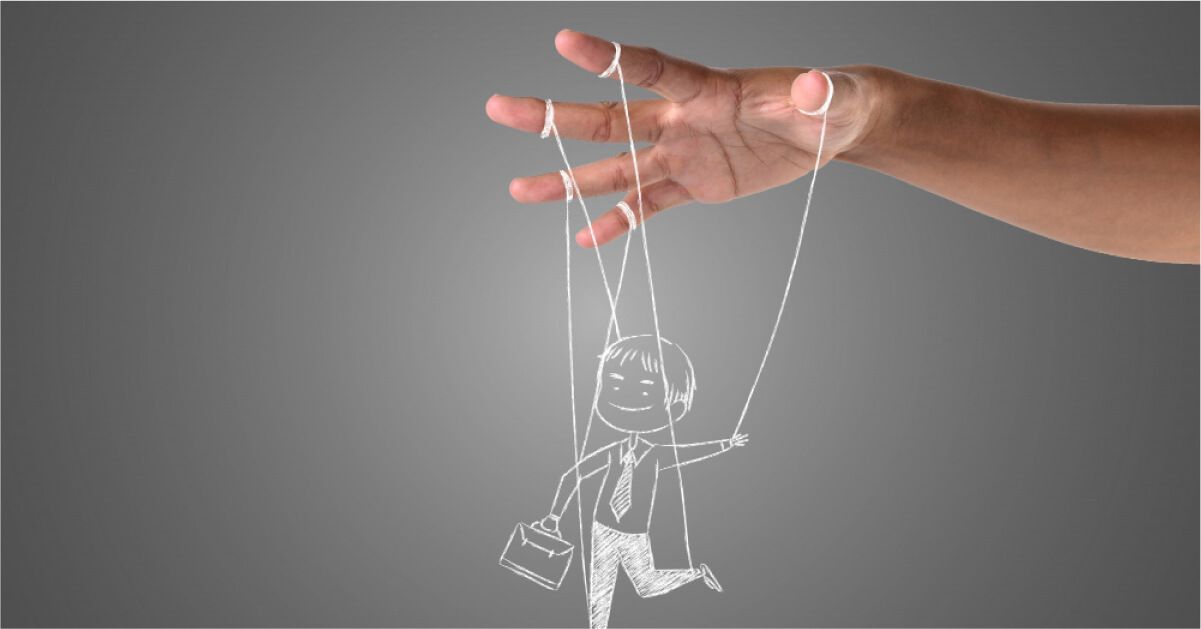Who are toxic employees: Signs to look out for and top strategies to deal with toxic employees

Toxic employees can undermine workplace harmony, diminish productivity, disrupt workplace efficiency, and negatively impact overall business operations. Identifying and addressing such individuals promptly is crucial for maintaining a healthy work environment.
Toxic employees can also negatively impact company culture, making it essential to maintain a positive company culture to promote productivity and employee satisfaction.
Some signs of toxic behavior include consistent negativity, lack of accountability, spreading gossip, and undermining colleagues’ efforts. These behaviors affect individual morale and can erode team cohesion and trust.
Dealing with toxic employees requires a strategic approach to address their behavior effectively without causing further disruption. Implementing clear communication channels, setting firm boundaries, and providing constructive feedback are essential steps.
It’s also important to foster an inclusive culture where positive behaviors are recognized and rewarded. Sometimes, more direct actions, such as formal warnings or even termination, may be necessary if the toxic behavior persists despite intervention efforts.
Understanding the signs of toxic employees and having a robust strategy to address their behavior can significantly improve workplace dynamics, leading to a more productive and positive organizational culture.
What is a toxic employee?

A toxic employee is an individual whose behavior and actions negatively impact their colleagues and the overall work environment. They often exhibit traits such as chronic negativity, uncooperativeness, and a lack of accountability.
These employees may frequently engage in gossip, spread rumors, and create conflict among team members. Their disruptive behavior can erode trust, diminish morale, and disrupt team cohesion, leading to a decline in productivity and a hostile work atmosphere.
Toxic employees often resist feedback and refuse to take responsibility for their actions, blaming others for their mistakes or failures. They may undermine the efforts of their colleagues, either through passive-aggressive behavior or overt sabotage.
Employees acting in a toxic manner can lead to decreased morale and a hostile environment by influencing others to adopt similar negative behaviors.
Addressing the issue of toxic employees is critical for maintaining a healthy and productive workplace. It requires clear identification of the problematic behaviors and a strategic approach to managing and mitigating their impact.
This might involve setting firm boundaries, providing targeted feedback, and, if necessary, taking disciplinary actions. By effectively dealing with toxic employees, organizations can foster a more positive, collaborative, and productive work environment.
Impact of toxic employees at work

Toxic employees can have a profoundly detrimental impact on the workplace. Their negative behavior—ranging from manipulation and gossip to constant negativity and undermining others—can create a hostile environment that affects everyone around them.
The negativity from one individual can ripple through the entire organization, affecting morale, productivity, and even the business's reputation and success.
This toxicity leads to increased stress and frustration among coworkers, who may feel demoralized and disengaged. The behavior of a toxic employee can burden other employees, leading to decreased morale and productivity. The presence of a toxic employee can disrupt teamwork and collaboration, as trust and communication break down.
Toxic employees often contribute to higher turnover rates. 75% of the UK’s employees say they have experienced a “toxic workplace culture. Talented employees may choose to leave rather than endure a toxic work environment, resulting in the loss of valuable skills and institutional knowledge.
This turnover is costly for organizations, both in terms of recruitment expenses and the time required to train new hires.
Productivity also suffers when toxic behavior goes unchecked. Employees distracted by interpersonal conflicts or the stress of dealing with a toxic coworker are less focused and effective in their roles. The overall morale and workplace culture deteriorate, leading to a decline in job satisfaction and engagement.
Addressing toxic behavior promptly is essential. Implementing clear policies, providing training on conflict resolution, and fostering an open, supportive culture can help mitigate the impact of toxic employees and maintain a healthy, productive work environment.
How do you identify toxic employees: 9 Signs of a toxic employee to look out for?

Recognizing these signs early can help managers and HR professionals identify toxic employees by recognizing specific red flags and intervene promptly to mitigate the negative impact on the workplace and promote a healthier, more productive environment.
- Constant negativity: Toxic employees often have a perpetually negative attitude, frequently complaining about tasks, colleagues, or company policies, which can bring down the morale of the entire team.
- Blame-shifting: They consistently refuse to take responsibility for their mistakes, instead blaming others or external circumstances for their failures.
- Gossiping and rumor-spreading: Engaging in office gossip and spreading rumors is a common trait of toxic employees, leading to a lack of trust and increased tension among team members. This behavior can negatively impact other team members by creating an atmosphere of negativity and hostility.
- Undermining colleagues: These individuals may deliberately sabotage or undermine the efforts of their colleagues, whether through passive-aggressive behavior or more direct actions.
- Lack of teamwork: A toxic employee often refuses to collaborate, preferring to work in isolation or actively avoiding contributing to team efforts, which disrupts the cohesion and productivity of the group.
- Frequent conflicts: They are often at the center of workplace conflicts, whether with peers, subordinates, or supervisors, creating a hostile and divisive environment.
- Resistance to feedback: Toxic employees are typically resistant to constructive criticism, refusing to acknowledge their faults or make necessary improvements.
- Poor work ethic: This may manifest as a lack of commitment to their duties, frequent absenteeism, or consistently delivering subpar work.
- Manipulative behavior: They may manipulate situations or people to their advantage, often at the expense of others, creating a toxic atmosphere of mistrust and resentment.
What are the types of toxic employees at work?

Understanding these types of toxic employees can help organizations identify and address problematic behaviors early, fostering a healthier and more productive workplace. The presence of a toxic worker can significantly diminish team effectiveness and overall performance.
- The gossip: This employee thrives on spreading rumors and engaging in office gossip, creating distrust and tension among colleagues. Their behavior can damage relationships and morale, leading to a toxic work environment. Toxic workers like these can affect the morale and trust of other employees, impacting the overall organizational culture.
- The bully: Bullies use intimidation, aggression, and domination to control others. They may belittle or harass their colleagues, creating a hostile work atmosphere where employees feel unsafe and undervalued.
- The slacker: This type of employee consistently shirks responsibilities, delivering subpar work or missing deadlines. Their lack of commitment and poor work ethic can frustrate team members who have to pick up the slack.
- The credit stealer: Known for taking credit for others’ work, the credit stealer undermines trust and demoralizes colleagues. This behavior can lead to resentment and reduce the overall motivation within the team.
- The know-it-all: This employee believes they have superior knowledge and expertise, often disregarding others’ input and ideas. Their arrogance can stifle collaboration and innovation, leading to a toxic dynamic where team members feel undervalued.
- The victim: Constantly portraying themselves as the victim, this employee refuses to take responsibility for their actions and often blames others or external circumstances for their problems. This mindset can hinder progress and create a negative atmosphere.
- The drama queen/king: known for creating unnecessary drama and overreacting to minor issues, this employee can disrupt the workflow and distract colleagues from their tasks. Their behavior often leads to a stressful and chaotic work environment.
- The micromanager: This type of employee excessively controls and scrutinizes the work of others, leading to frustration and decreased autonomy among team members. Their lack of trust can stifle creativity and hinder productivity.
- The passive-aggressive: This employee avoids direct confrontation but expresses their discontent through subtle, indirect actions such as procrastination, sarcasm, or backhanded compliments. Their behavior can create confusion and undermine team cohesion.
Causes of employees being toxic at work

Employees can become toxic at work for various reasons, often stemming from personal, organizational, or situational factors. Understanding these causes can help in addressing and mitigating toxic behavior effectively.
- Personal issues: Personal problems, such as financial difficulties, relationship troubles, or mental health issues, can spill over into the workplace. Employees dealing with significant stress or anxiety may exhibit negative behavior as a coping mechanism.
Conversations about personal lives, especially in a remote work setting, can also impact workplace dynamics, sometimes leading to gossip and negatively affecting team relationships and morale. - Poor management: Inadequate or authoritarian management styles can contribute to employee toxicity. A lack of support, recognition, or clear communication from leaders can foster resentment and negative attitudes.
- Workplace culture: A toxic work environment can breed toxic employees. If negativity, competition, and blame-shifting are prevalent, employees may adopt these behaviors to fit in or protect themselves.
- Lack of accountability: When toxic behavior is not addressed or disciplined, it can reinforce and perpetuate such behavior. Employees may feel emboldened to act negatively if they believe there are no consequences.
- Job dissatisfaction: Boredom, lack of challenge, or feeling undervalued can lead to frustration and negativity. Employees who are not engaged with their work are more likely to exhibit toxic behaviors.
- Conflict and competition: Unresolved conflicts or excessive internal competition can create a hostile environment. Employees might become toxic as a defensive response to perceived threats or to outmaneuver colleagues.
- Stress and burnout: 73% of employees who’ve experienced burnout, say a toxic workplace culture has contributed to it. High workloads, tight deadlines, and insufficient resources can lead to chronic stress and burnout. Stressed employees are more prone to irritability, anger, and other toxic behaviors.
- Insecurity and fear: Fear of job loss, insecurity about one’s abilities, or concern over career advancement can trigger toxic behaviors as employees attempt to safeguard their positions.
What is the effect of toxic employees on company culture?

A toxic person can have a profound and far-reaching impact on team dynamics and productivity. Their negative behavior often spreads, affecting the morale and productivity of those around them.
Colleagues may feel demotivated and disheartened by the constant negativity, gossip, or lack of accountability displayed by toxic employees. This can lead to increased stress and anxiety, making the work environment uncomfortable and hostile.
Effective toxic employee dealing requires managers to be proactive in identifying issues and implementing strategies. Emphasizing the importance of communication and understanding the root causes of their behavior can help in addressing the problem.
Toxic employees can disrupt team cohesion and trust. Their actions, whether it’s taking credit for others’ work, undermining colleagues, or creating unnecessary drama, can cause divisions within the team.
This lack of trust and collaboration can hinder the team’s ability to work effectively together, reducing overall productivity and stifling innovation.
The presence of toxic employees often leads to higher turnover rates. Talented employees who feel unappreciated or stressed by the toxic behavior may choose to leave the organization, resulting in a loss of valuable skills and experience.
This turnover not only incurs additional recruitment and training costs but also affects the remaining employees’ morale and workload.
How do you discipline a toxic employee at work without affecting team dynamics?
Disciplining a toxic worker without affecting team dynamics requires a strategic and sensitive approach. Start by addressing the issue privately to avoid public embarrassment and potential resentment.
A one-on-one meeting allows for a candid discussion about the specific behaviors that are problematic and their impact on the team and the overall workplace environment. Clearly articulate the expectations for improvement and provide concrete examples of unacceptable behavior.
During this conversation, it is essential to listen to the employee’s perspective. Understanding their viewpoint can offer insights into underlying issues that may be contributing to their behavior.
This can also help in identifying any necessary support or resources, such as counseling or professional development, which can assist the employee in making positive changes.
After the initial discussion, establish a clear, documented plan for improvement. This plan should include specific, measurable goals and a timeline for achieving them. Regular follow-up meetings are crucial to monitor progress, provide feedback, and offer further support.
Maintaining transparency with the team, without divulging specific details, ensures they understand that steps are being taken to address the issue.
How to deal with toxic employees: 9 Top strategies

By employing these strategies, organizations can effectively manage toxic workers and foster a more positive, productive work environment.
- Identify the behavior: Clearly identify the specific toxic behaviors that are affecting the team. Document instances and gather evidence to ensure a precise understanding of the issues.
- Provide constructive feedback: Address the toxic behavior directly with the employee in a private and professional manner. Offer specific examples and provide constructive feedback on how their actions are impacting the team.
- Clear expectations: Outline clear expectations for behavior and performance. Make it clear what changes are required and the consequences for failing to improve.
- Offer support and resources: Sometimes, toxic behavior stems from personal issues or stress. Provide support such as counseling, mentorship, or professional development opportunities to help the employee address underlying problems.
- Encourage open communication: Foster a culture of open communication where employees feel safe voicing concerns. Implement regular check-ins and team meetings to address issues proactively.
- Promote a positive work culture: Reinforce positive behaviors and recognize employees who contribute to a healthy work environment. This can help counterbalance the effects of toxic behavior and set a standard for others.
- Implement clear policies: Develop and enforce clear policies regarding acceptable behavior and the process for addressing issues. Ensure that all employees are aware of these policies and the procedures for reporting concerns.
- Monitor progress: Regularly review the employee’s behavior and progress after providing feedback. Offer ongoing support and make adjustments to the action plan as needed.
- Take decisive action: If toxic behavior persists despite intervention, be prepared to take more serious actions, such as formal warnings or termination. Protecting the overall health of the team may require making difficult decisions to remove the disruptive influence.
15 Toxic employees examples to be aware of

Employees acting in a toxic manner can negatively impact workplace dynamics. Here are 15 examples of toxic employee behaviors to be aware of:
- Chronic negativity: Constantly complaining or expressing dissatisfaction with work, colleagues, or the organization.
- Gossiping: Spreading rumors or talking behind colleagues’ backs, which undermines trust and teamwork.
- Passive-aggressive behavior: Subtle hostility or indirect resistance, such as procrastinating or deliberately missing deadlines.
- Blaming others: Refusing to take responsibility for mistakes and shifting blame onto others.
- Sabotaging colleagues: Deliberately undermining others’ work or efforts to advance one’s own position.
- Manipulating situations: Using deceitful tactics or exploiting others for personal gain or to create conflict.
- Overly competitive: Engaging in cutthroat behavior to outshine or undermine coworkers rather than fostering collaboration.
- Defensiveness: Responding to constructive criticism with hostility or denial, making it difficult to address performance issues.
- Withholding information: Failing to share important information or resources that others need to do their jobs effectively.
- Frequent absenteeism: Regularly taking unscheduled leave or showing up late, disrupting team productivity.
- Lack of respect: Disregarding others’ opinions, ideas, or boundaries, often displaying rude or dismissive behavior.
- Victim mentality: Constantly feeling and acting as though one is being unfairly targeted or mistreated, even when it’s not the case.
- Excessive drama: Creating unnecessary drama or crises, often drawing attention to themselves and disrupting the workplace.
- Undermining authority: Challenging or disregarding leadership decisions in a way that erodes respect and authority.
- Refusal to collaborate: Avoiding teamwork or actively obstructing others’ efforts to work together effectively.
Role of employee development surveys in handling toxic employees at the workplace
Employee development surveys play a crucial role in handling toxic employees by providing valuable insights into workplace dynamics and identifying areas of concern.
These surveys gather feedback from employees about their experiences, perceptions, and challenges within the organization. By analyzing survey results, management can pinpoint patterns and trends related to toxic behavior, such as low morale, poor team cohesion, or instances of harassment.
Surveys help identify specific issues that might be linked to toxic employees, such as high levels of dissatisfaction or conflicts within teams. This information allows leaders to address these issues proactively, either by providing targeted support or implementing changes to improve the work environment.
Surveys offer a confidential channel for employees to voice concerns about toxic behavior without fear of retaliation, which can lead to early detection of problems.
Regular employee development surveys can track the effectiveness of interventions and monitor changes over time. By continuously gathering feedback, organizations can assess whether strategies to address toxic behavior are successful and make necessary adjustments.
Conclusion
Addressing toxic employees is crucial for maintaining a productive and positive work environment. By recognizing signs of toxicity, understanding its impact, and implementing effective strategies, organizations can mitigate the negative effects and foster a healthier workplace culture.
Regular feedback through employee development surveys can provide valuable insights and help in identifying and resolving issues early.
For more tools and strategies to enhance workplace culture and address toxic behavior, explore CultureMonkey. With CultureMonkey’s resources, you can promote a more engaged and supportive work environment, ensuring your team thrives.
FAQs
1. What is the first step in addressing a toxic employee?
The first step is to clearly identify and document the toxic behaviors affecting the team in a negative way. Gather specific examples and evidence of the issues before addressing them with the employee. This ensures that any discussions or interventions are based on concrete observations rather than perceptions, making the process more effective and objective.
2. How can a manager effectively communicate with a toxic employee?
Managers should approach communication with a toxic employee in a private, respectful manner. Use specific examples of problematic behavior, express how it affects the team, and provide clear expectations for change. Maintain a professional tone, listen actively, and offer support to help the employee improve. Open, honest dialogue is essential for resolving issues constructively.
3. How can a team member report toxic behavior safely?
Team members should use confidential channels provided by the organization, such as anonymous surveys or a dedicated HR contact. They should document incidents and provide clear details about the toxic behavior which can help in addressing them promptly. Ensuring anonymity and protection from retaliation is crucial for encouraging honest feedback and addressing concerns effectively.
4. What role does leadership play in preventing toxic behavior?
Leadership plays a critical role by setting the tone for workplace culture. They should model positive behavior, enforce clear policies, and address issues promptly. By fostering an environment of respect and accountability, leaders can prevent toxic behavior from taking root and ensure a supportive and collaborative work atmosphere where employees can thrive and work productively.
5. How often should employee development surveys be conducted?
Employee development surveys should be conducted regularly, typically on a quarterly or semi-annual basis. Frequent surveys allow organizations to monitor ongoing issues, track the effectiveness of interventions, and gauge overall employee satisfaction. Regular feedback helps identify and address problems early, contributing to a healthier work environment and also helps in bringing and retaining modern talent.



